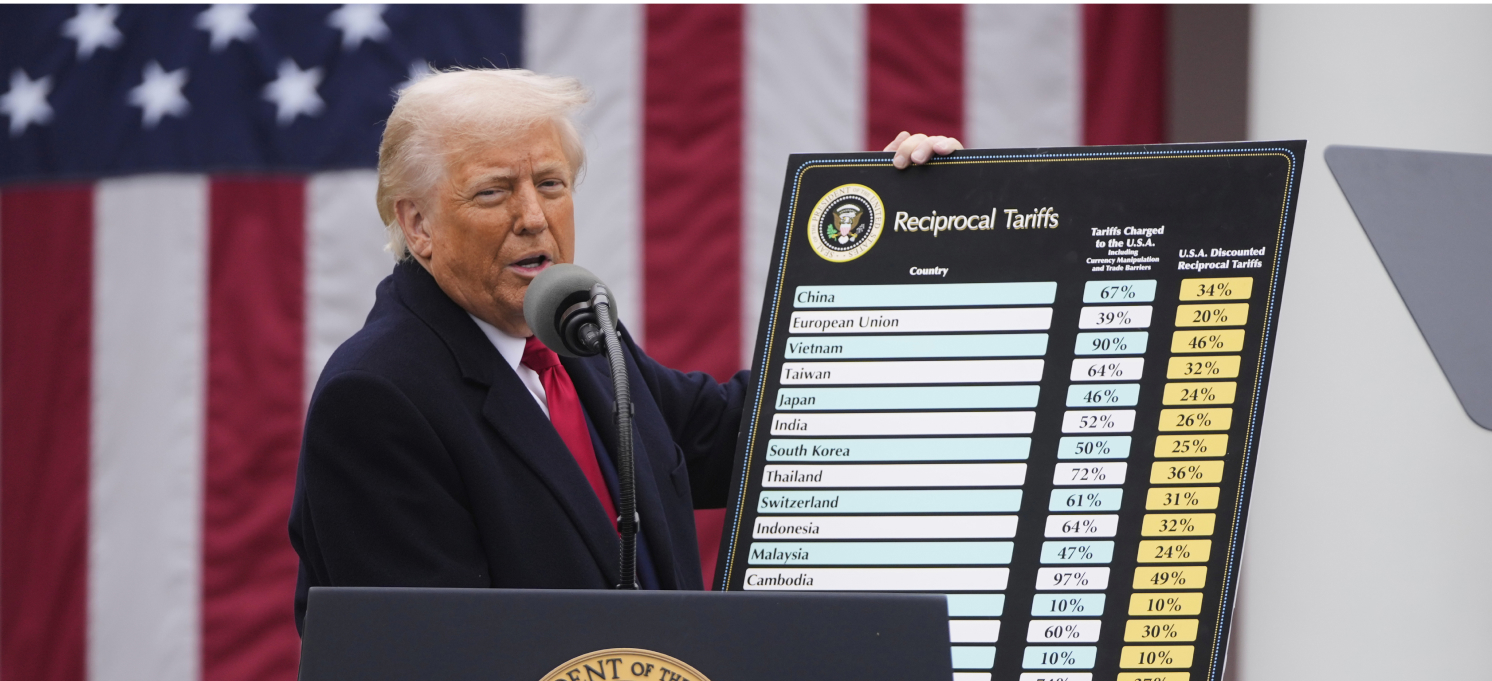
Russia’s wartime investment boom
Hello! Welcome to your weekly guide to the Russian economy — written by Denis Kasyanchuk and Alexander Kolyandr and brought to you by The Bell. This time we look at the rapid growth in investment that Russia has seen since the full-scale invasion of Ukraine. Where has the money come from? And where is it going? We also look at the continuing impact on Russian trade of the threat of Western secondary sanctions.
Why is investment in Russia at a 12-year high?
Prior to the war, the Russian government was banging its head against the wall trying to find a way to force businesses to stop sitting on financial reserves and prevent them paying gigantic dividends. Businesses complained that they would rather not invest because of a poor investment climate, state interference, and an unpredictable taxation policy.
Now, everything has changed. Capital investment (expenditure on new construction, higher-tech equipment for enterprises, purchase of new kit, etc.) in 2023 hit a 12-year high of 34 trillion rubles. That’s almost 10% more than the year before, according to experts.
More than two-and-a-half years since the start of the fighting, some economists predicted that the Central Bank’s tight fiscal policy, coupled with a labor shortage, would slow investment increases. However, it shows no sign of slowing. In the first three months of this year, Russian companies invested 5.9 trillion rubles, up 14.5% year-on-year.
Russia’s positive “investment gap” – i.e. the difference in growth rates between investment and GDP – has reached a 15-year high, according to the Moscow-based Center for Macroeconomic Analysis and Short-term Forecasting (CMASF).

All this means that the government is getting close to hitting one of its long-term targets – getting the proportion of investment in Russia’s GDP to 25%.
Why is investment growing?
A recent Central Bank report highlighted three reasons why companies are investing so much at the moment:
- Import substitution. This does not mean that Western imports have been successfully replaced by goods made in Russia. More likely, it’s to do with Russian companies having to swiftly replace Western-made goods with Chinese-made goods. Of last year’s 10% growth in investment, about 70% was “forced” in this way, then-Deputy Prime Minister Andrei Belousov said in an interview last year.
- “Pivot to the East.” Following the start of the war and imposition of Western sanctions, Russian companies had to rebuild supply chains and invest in a new transportation and logistics infrastructure. “It’s one thing to send cargo to Europe via Rotterdam, but quite another to get it to Southeast Asia, to China, to India or Central Asia: the costs are different,” Belousov explained in the same interview.
- Government support. Military spending has been breaking records and Putin generously continues to shower the population with a wide range of social benefits, including subsidized mortgages.
Where’s the money going?
According to the CMASF, the main increases in investment in 2022 and 2023 were in the fuel and energy sector (up 17.8%), transport (up 24.7%), and construction and real estate (up 21.2%). These three sectors account for 12.4% of the 17.1% investment growth seen since tanks were sent over the border into Ukraine.
But don’t be misled by the apparently civilian nature of these sectors. One of the fastest-growing areas for investment in 2022 and 2023 was mechanical engineering. This includes manufacture of finished metal products (i.e. weapons), computers, lenses and electronics, as well as electrical equipment.

Of the 15 sectors with the fastest-growing investment in 2023, only two were purely consumer sectors (car manufacturing and drinks production). These two sectors were ones in which foreign players left the market particularly quickly.
Where’s the money coming from?
More than half of the money comes from companies’ own funds. About 20% is state money. However, this does not mean that Russian business suddenly began liking the local investment climate. The investment climate abroad simply became far too unwelcoming.

Increased state spending is the second reason for increased investment. The main consequence of this is to overheat Russia’s economy.
About 9% of Russian investment comes from borrowed funds. Despite very high interest rates, companies are still borrowing. Apparently, they hope that, if they run into trouble, the state will bail them out. But high interest rates are also a possible threat to the economy – if overstretched borrowers are unable to service their borrowings, CMASF analysts warn, it could mean the banking system requires an additional injection of capital.

Of course, foreign investment in the Russian economy has collapsed since the start of the full-scale invasion. In 2021, foreign money accounted for 0.4% of investment in Russia. By 2023 it was 0.1% – the lowest level for more than a decade.
Why the world should care
The investment boom is yet more proof that international isolation – at least for the moment – is working to Russia’s advantage. And it’s another reason for the Kremlin to keep the war going: if Russia were to return to the global economy and open up its markets, then all its import substitution and home-grown innovation would suddenly become useless.
Western sanctions continue to squeeze Russian trade
Western capitals seem intent on keeping up the sanctions pressure on Russia, pushing third countries to comply with restrictions, or face sanctions themselves. In the meantime, Russia is now reportedly looking to barter deals to help keep imports flowing.
- The U.S. has threatened Turkey with sanctions if it does not stop the re-export of U.S. dual-use goods and components to Russia, the Financial Times reported Wednesday. In particular, the U.S. is reportedly concerned about the trade in chips. To this end, Matthew Axelrod, assistant commerce secretary, visited Ankara and Istanbul to meet Turkish officials and executives. In Axelrod’s words, if Ankara cannot solve this “urgent problem” the U.S. will have “no choice” but to impose sanctions.
- Regardless of the outcome, all this attention will hit trade between Russia and Turkey. Since December, when Washington passed a decree paving the way for secondary sanctions against foreign companies engaged in deliberate, or unintentional, violations of export sanctions, Russia’s main trading partners have been much more cautious. The European Union has also stepped up the pressure on Moscow by putting the onus on companies to comply with sanctions.
- The U.S. decree led to a significant fall in Russian imports, according to The Bell’s analysis. Supplies from some countries, including Turkey, are down a third this year.
- Faced with payment problems, Russia and China are working on cash free barter schemes, Reuters reported Thursday. The first such exchange scheme – Chinese goods for Russian agricultural products – could apparently begin as early as the fall. Barter deals were widespread in Russia in the 1990s, but as the banking and finance sectors developed they became a thing of the past. Not anymore, apparently.
- Trade problems mean that Russia is also experiencing a shortage of yuan – effectively its only internationally usable currency. This has driven up interbank lending rates. The yuan liquidity situation has continued to deteriorate in recent months with a senior manager at Sberbank reportedly describing it as “dire” during a conference call with investors.
Why the world should care
The threat of secondary sanctions is unlikely to ever completely halt the flow of chips, semiconductors and other key components to Russia’s defense sector. But tightening sanctions pushes up the cost of imports and, in turn, fuels inflation. This creates all manner of unpredictable problems for the broader Russian economy.
Figures of the week
- Western sanctions against the Moscow Exchange, and problems with third country payments, have led to a spike in the volume of yuan and euro being traded in Central Asia’s Kazakhstan. The level of over-the-counter interbank trade in euro-tenge and yuan-tenge in Kazakhstan jumped sharply in June, according to data from the central bank. Sales and purchases of euros were up 100 times, and yuan 30 times. In addition, there was an increase in ruble trade volumes. In June, there was a 48% increase in purchases of the Russian currency and a 121% rise in sales. This is because Kazakhstan, along with the United Arab Emirates, is turning into a key intermediary for trade between Russian and Chinese companies.
- From July 30 to August 5, weekly inflation in Russia slowed to zero. There was no change in prices compared with the previous week, according to the Economic Development Ministry. Annual inflation slowed to 9.02% from 9.11%. Since the start of the year, prices are up 4.99%.
- Russian lenders issued 55.1% fewer mortgages in July than the month before, according to figures from consulting firm Frank RG. In quantitative terms there was a fall of 56.5%. Frank RG’s analysts explained that there had been a rush to secure mortgages before the end of the government’s subsidized mortgage program on July 1, and after that interest shrank dramatically. The volume of new mortgages is now about the same level as in June 2022. Many analysts expect Russia’s mortgage market to cool in the second half of this year as a result of the end of government subsidies for mortgages, and persistently high interest rates.
Further reading
The Narrow Bottleneck of Ukraine-Russia Reconciliation
A Murky Cypriot Firm Is Helping Belarus Export Potash — In Breach of EU Sanctions



PAID SUBSCRIPTION LAUNCH
From May 1, 2025, The Bell in English will no longer be free
From May 1, 2025, all The Bell’s newsletters and online content will be behind a paywall. We have taken this decision so that The Bell can remain financially independent, and maintain our high standards of journalism and economic expertise






